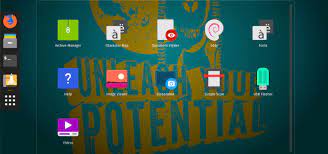Exploring the Enhanced User Experience of Debian 11 with XFCE Desktop Environment
Exploring Debian 11 with XFCE Desktop Environment
Debian 11, codenamed “Bullseye,” is the latest stable release of the renowned Debian operating system. Known for its stability, security, and extensive software repositories, Debian is a popular choice among Linux enthusiasts and professionals alike. With the introduction of Debian 11, users can expect a host of new features and improvements across the board.
The XFCE Desktop Environment
One of the notable desktop environments available in Debian 11 is XFCE. XFCE is a lightweight yet feature-rich desktop environment that offers a balance between functionality and performance. With XFCE, users can enjoy a clean and intuitive interface without compromising on customisation options or productivity tools.
Key Features of Debian 11 with XFCE
- Performance: XFCE is known for its low system resource usage, making it ideal for older hardware or users looking for a snappy desktop experience.
- Customisation: With XFCE, users have the flexibility to customise their desktop layout, themes, icons, and more to suit their preferences.
- Productivity Tools: XFCE comes equipped with a range of productivity tools such as a file manager, terminal emulator, panel with application launchers, and workspace switcher.
- Stability: Paired with Debian’s reputation for stability, users can rely on Debian 11 with XFCE for a reliable and consistent computing environment.
Getting Started with Debian 11 and XFCE
To experience Debian 11 with XFCE firsthand, users can download the installation image from the official Debian website or explore pre-built images from community distributions. The installation process is straightforward and well-documented, allowing users to set up their system quickly and efficiently.
In Conclusion
Debian 11 with the XFCE desktop environment offers users a powerful yet lightweight computing experience that prioritises performance and customisation. Whether you are a seasoned Linux user or new to the world of open-source software, exploring Debian 11 with XFCE can provide you with a stable and user-friendly platform to work and play.
Top 5 Tips for Enhancing Your Debian 11 XFCE Experience
- Customise your XFCE desktop by right-clicking on the panel to access Panel Preferences and adjust settings such as size, position, and appearance.
- Install new software easily using the Synaptic Package Manager or by using the ‘apt’ command in the terminal.
- Keep your system secure by regularly updating packages with the ‘sudo apt update’ and ‘sudo apt upgrade’ commands.
- Improve productivity by setting up keyboard shortcuts for frequently used applications or actions in the Keyboard settings.
- Explore additional features and functionality by installing XFCE plugins from the official repositories.
Customise your XFCE desktop by right-clicking on the panel to access Panel Preferences and adjust settings such as size, position, and appearance.
Enhance your Debian 11 XFCE desktop experience by utilising the simple yet powerful tip of customising your XFCE panel. By right-clicking on the panel, you can access Panel Preferences to fine-tune settings such as size, position, and appearance. This easy-to-use feature allows you to personalise your desktop layout to suit your workflow and aesthetic preferences, making your computing environment truly your own.
Install new software easily using the Synaptic Package Manager or by using the ‘apt’ command in the terminal.
In Debian 11 with XFCE, installing new software is a breeze thanks to the user-friendly Synaptic Package Manager or the powerful ‘apt’ command in the terminal. Whether you prefer a graphical interface or command-line efficiency, both options allow users to easily search for, install, and manage software packages with just a few clicks or commands. This flexibility and accessibility make adding new applications to your Debian system a seamless and straightforward process, catering to users of all preferences and skill levels.
Keep your system secure by regularly updating packages with the ‘sudo apt update’ and ‘sudo apt upgrade’ commands.
To ensure the security of your Debian 11 system running XFCE, it is crucial to stay proactive in maintaining the health of your software by regularly updating packages. By executing the ‘sudo apt update’ and ‘sudo apt upgrade’ commands in the terminal, you can keep your system up-to-date with the latest security patches and bug fixes, helping to safeguard your system against potential vulnerabilities and ensuring a smooth and secure computing experience.
Improve productivity by setting up keyboard shortcuts for frequently used applications or actions in the Keyboard settings.
Enhance your productivity on Debian 11 with XFCE by utilising keyboard shortcuts for frequently used applications or actions. By setting up custom keyboard shortcuts in the Keyboard settings, you can streamline your workflow and access essential functions with ease. Whether it’s launching a specific application, switching between windows, or performing common tasks swiftly, configuring keyboard shortcuts can significantly boost your efficiency and make navigating your system more intuitive. Take control of your computing experience and tailor it to suit your needs by harnessing the power of personalised keyboard shortcuts in Debian 11 with XFCE.
Explore additional features and functionality by installing XFCE plugins from the official repositories.
Enhance your Debian 11 XFCE experience by delving into a realm of additional features and functionalities through the installation of XFCE plugins from the official repositories. By exploring these plugins, users can customise their desktop environment further, expand productivity tools, and tailor their computing experience to suit their individual needs. Whether it’s adding new applets, enhancing system monitoring capabilities, or improving window management, XFCE plugins offer a wealth of possibilities to enrich your Debian 11 XFCE setup.





